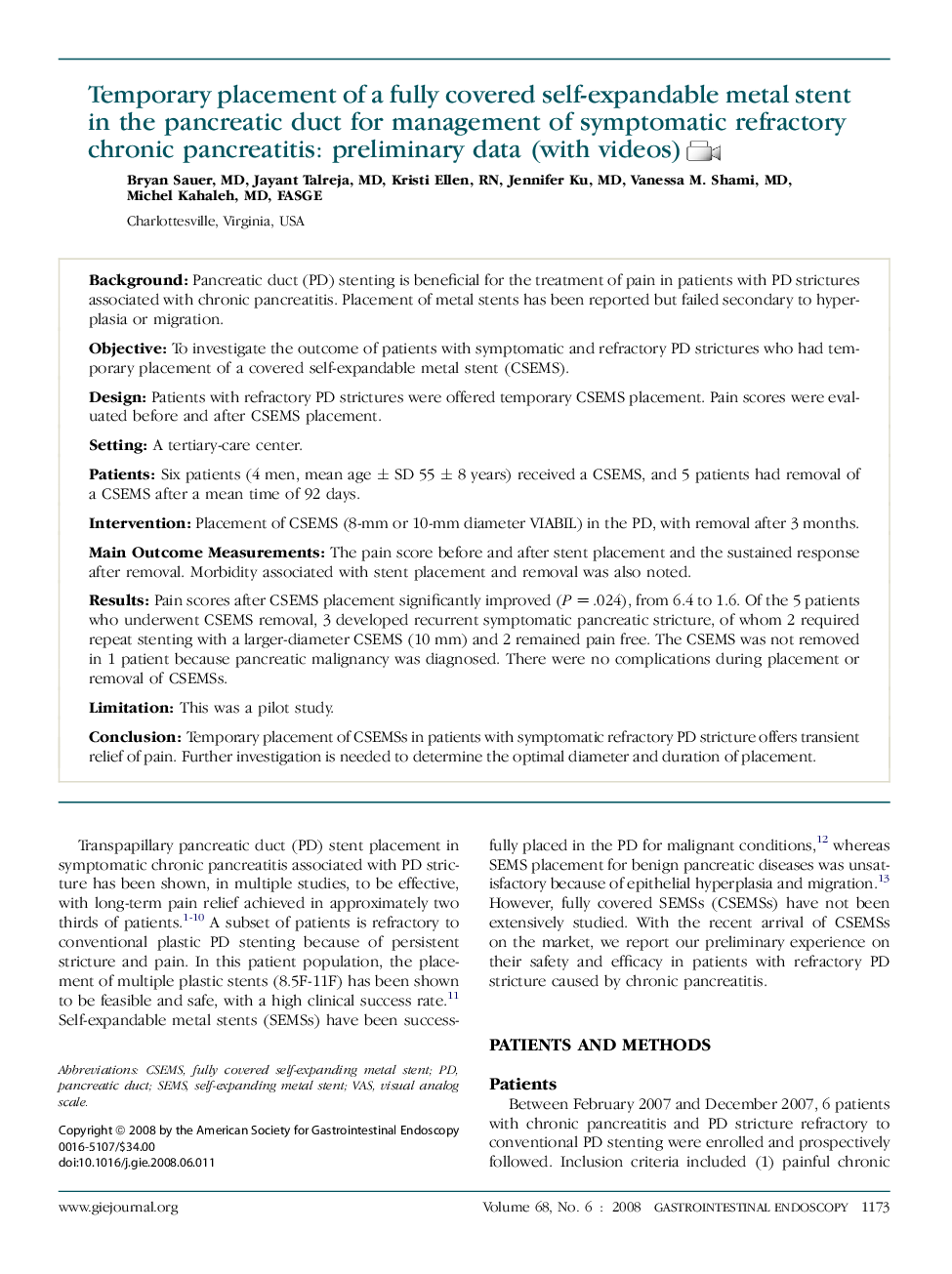| Article ID | Journal | Published Year | Pages | File Type |
|---|---|---|---|---|
| 3308253 | Gastrointestinal Endoscopy | 2008 | 6 Pages |
BackgroundPancreatic duct (PD) stenting is beneficial for the treatment of pain in patients with PD strictures associated with chronic pancreatitis. Placement of metal stents has been reported but failed secondary to hyperplasia or migration.ObjectiveTo investigate the outcome of patients with symptomatic and refractory PD strictures who had temporary placement of a covered self-expandable metal stent (CSEMS).DesignPatients with refractory PD strictures were offered temporary CSEMS placement. Pain scores were evaluated before and after CSEMS placement.SettingA tertiary-care center.PatientsSix patients (4 men, mean age ± SD 55 ± 8 years) received a CSEMS, and 5 patients had removal of a CSEMS after a mean time of 92 days.InterventionPlacement of CSEMS (8-mm or 10-mm diameter VIABIL) in the PD, with removal after 3 months.Main Outcome MeasurementsThe pain score before and after stent placement and the sustained response after removal. Morbidity associated with stent placement and removal was also noted.ResultsPain scores after CSEMS placement significantly improved (P = .024), from 6.4 to 1.6. Of the 5 patients who underwent CSEMS removal, 3 developed recurrent symptomatic pancreatic stricture, of whom 2 required repeat stenting with a larger-diameter CSEMS (10 mm) and 2 remained pain free. The CSEMS was not removed in 1 patient because pancreatic malignancy was diagnosed. There were no complications during placement or removal of CSEMSs.LimitationThis was a pilot study.ConclusionTemporary placement of CSEMSs in patients with symptomatic refractory PD stricture offers transient relief of pain. Further investigation is needed to determine the optimal diameter and duration of placement.
